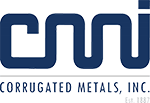Liquefied natural gas (LNG) export facilities are critical for meeting the increasing demand for LNG globally, including in the United States. These facilities play a vital role in the energy trade, enabling the transportation of natural gas in its liquid form. They rely on metal structures for constructing, storing, transporting, and processing LNG.
This article will discuss the construction process of LNG export facilities and explore its benefits and economic impact.
Construction Process of US LNG Export Facilities
The construction of LNG export facilities involves several key stages that require careful planning, design, and execution. Here is an overview:
Step 1: Site Selection and Preparation
Identify and prepare a suitable site based on natural gas reserves, transportation infrastructure, environmental considerations, and regulatory requirements.
Step 2: Engineering and Design
Develop detailed plans and specifications for metal structures, equipment, and systems. The plans should be based on capacity, liquefaction technology, safety regulations, and components integration.
Step 3: Procurement and Fabrication of Metal Structures and Equipment
This step involves carefully sourcing and fabricating metal components, including pipelines, storage tanks, processing units, transportation vessels, and specialized equipment. Metal components in constructing LNG export facilities must meet stringent quality and performance standards.
Step 4: Construction and Installation
Assemble the facility according to engineering and design plans, including metal structures, equipment, and systems. This must also involve skilled labor, safety protocols, and adherence to construction schedules.
Step 5: Testing and Commissioning
Thoroughly test and inspect metal structures, equipment, and systems to verify performance and safety, making necessary adjustments or modifications for optimal operation.
Step 6: Commissioning and Start-Up
Introduce natural gas into the facility for the liquefaction process and gradually ramp up production while monitoring, testing, and optimizing operations.
Step 7: Project Completion and Handover
Provide proper documentation — including as-built drawings, operation and maintenance manuals, and safety records to the operator for ongoing management and maintenance of the facility.
Benefits and Economic Impact of US LNG Export Facilities
Here are the key advantages and impacts of US LNG export facilities:
Diversifies Energy Markets
LNG export facilities allow the United States to diversify its energy markets by accessing global markets for natural gas. This helps reduce dependence on domestic needs and provides an opportunity to export excess natural gas production.
Increases Demand for Natural Gas
These facilities create additional demand for natural gas, leading to increased production and economic growth in the natural gas industry. This can positively impact employment, tax revenues, and economic development in regions with abundant natural gas reserves.
Boosts US Trade Balance
LNG exports can improve the US trade balance by generating revenue from international markets. In addition, increased LNG exports can offset the trade deficit by bringing in foreign currency and promoting US economic competitiveness in global energy markets.
Creates Jobs and Promotes Economic Development
LNG export facilities’ construction, operation, and maintenance generate employment opportunities in various sectors, including engineering, manufacturing, construction, procedures, and supply chains. This can stimulate local economies and contribute to economic development in surrounding areas.
Transfers Knowledge and Enhances Technology Innovation
The development of US LNG export facilities requires advanced technologies and expertise in liquefaction, transportation, and storage of natural gas. This can spur innovation, research, and development in the energy sector, leading to technological advancements and knowledge transfer that can benefit other industries and sectors.
Discover the CMI Advantage for LNG Export Facilities Construction
Are you planning to construct LNG export facilities? Choose Corrugated Metals, Inc. for reliable, high-quality metal products! Our state-of-the-art facilities, competent personnel, and expertise in metal manufacturing including roll forming, press-braking, shearing, and turret-punch operations — ensure we can satisfy your project requirements.
Contact us to learn more about how we can help you achieve your energy infrastructure goals, or request a quote today!

